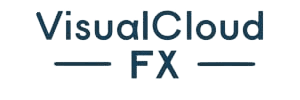Optimizing Images for a Local Audience Reach
March 12, 2024 | by Jacob Cavazos

As we strive to optimize images for a local audience reach, it's akin to selecting the perfect ingredients for a recipe—each element must complement the dish to create a harmonious and flavorful experience. Just like a well-crafted dish, the images we choose and optimize play a crucial role in capturing the attention of our local audience. From aligning with relevant keywords to ensuring swift load times, there are several key factors to consider. But how exactly can we ensure that our images resonate with our local audience and drive engagement? Let's explore practical strategies for optimizing images to effectively connect with our local market and enhance our online presence.
Keyword-Aligned Image Selection

When selecting images for a local audience, it's crucial to align them with specific keywords and intent to enhance relevance and SEO. This means understanding the local context and the search habits of the local audience. By incorporating local keywords and intent into your image selection, you can enhance the relevance of your content for local search, improving your website's visibility in local search results on Google. This not only makes your images more discoverable but also enhances the overall local SEO strategy for your website.
To achieve this, conduct thorough keyword research to identify the terms and phrases that resonate with your local audience. Then, ensure that the images you select are not only visually appealing but also relevant to these local keywords. By doing so, you can create a more targeted and impactful user experience for your local audience. This approach will help your content stand out in local search results, driving higher engagement and traffic from your local audience.
In essence, aligning images with local keywords and intent is a powerful strategy for optimizing images and enhancing the overall local SEO performance of your website.
Web-Optimized Image Formatting
How can we ensure that images are optimized for the web to enhance user experience and search engine visibility? Web-optimized image formatting is crucial for improving user experience and search engine rankings. To achieve this, we should:
- Use descriptive and keyword-rich file names to enhance search engine optimization (SEO) and make images more discoverable.
- Utilize image compression tools to reduce file size without compromising quality, thereby improving website load times and user experience.
- Format and size images appropriately for the web to prevent unnecessary loading and enhance user experience on the specific web page.
- Align images with keyword intent to make them relevant to the target audience and improve search engine visibility.
- Incorporate descriptive alt text to improve accessibility and help search engines understand the image content, further enhancing SEO.
Efficient Image Compression

Efficient Image Compression builds on the foundation of web-optimized image formatting, enhancing user experience, search engine visibility, and local SEO impact. By reducing file sizes without compromising quality, website load times are improved, contributing to a positive user experience. Compressing images also plays a crucial role in enhancing search engine visibility, organic search performance, and overall website speed. When optimizing images, it's essential to use descriptive file names, appropriate sizes, and keyword-rich alt text to further enhance local SEO efforts. Leveraging image compression tools and optimizing file names and alt text can significantly contribute to improved website performance and user experience. Thoughtfully choosing and optimizing images for your website not only improves website performance but also helps in connecting with your local audience and gaining a competitive edge. Keeping file size in check, especially for hero images used across web pages and Social Media, ensures faster loading times and better user engagement. Additionally, paying attention to aspect ratio, image alt text, and open graph optimization further enhances the impact of optimized images on platforms like Google My Business and Social Media.
Strategic File Naming
Strategic file naming is crucial for optimizing image searchability and enhancing local SEO impact. When naming image files for your website, it's essential to follow best practices to ensure they are easily discoverable in Google search and resonate with your local audience. Here are some practical tips for strategic file naming:
- Use descriptive and relevant names that accurately reflect the content of an image.
- Incorporate relevant target keywords in the file name to improve search visibility.
- Separate words in the file name with hyphens to enhance readability and SEO effectiveness.
- Ensure that the file name aligns with the context of the image and the web page it is featured on.
- Consider using free tools to check the uniqueness and resolution of your images, ensuring they meet the standards for optimal web performance.
Descriptive Alt Text Implementation

When optimizing images for local audience reach, ensuring descriptive alt text implementation is a pivotal step for enhancing accessibility and search engine understanding. Descriptive alt text should provide a concise and relevant description of the image, incorporating keywords if applicable. This not only enhances search engine optimization but also aligns with web accessibility standards, benefiting both users and search engine rankings. Utilizing descriptive alt text is essential for ensuring that visually impaired users can comprehend the context of the images on a webpage. To effectively implement descriptive alt text, consider the following guidelines:
| Aspect | Description | Example |
|---|---|---|
| Conciseness | Keep the alt text brief while conveying the essential information. | "Red convertible car" |
| Relevance | Ensure the alt text accurately describes the image and its purpose on the web page. | "Landing page banner image showcasing red convertible car" |
| Keyword Inclusion | If applicable, include relevant keywords in the alt text to improve search engine optimization. | "Luxury car dealership landing page banner featuring red convertible car" |
Frequently Asked Questions
How Could You Optimize Images?
We can optimize images by using image compression to reduce file size, choosing the right file format, adding descriptive alt text, balancing colors, and geotagging for local landmarks and events to resonate with our audience's cultural context and demographics.
How Do You Optimize Images for Performance?
We optimize images for performance by using image compression, local keywords, image alt text, geo tagging, image file names, local image directories, image sitemap, local image sharing, image caching, and local image optimization tools.
Which of the Following Are the Ways of Optimizing the Images?
We optimize images for performance by compressing files, using descriptive alt text, and geotagging photos. These strategies enhance local SEO, making our content more relevant to our audience and improving accessibility.
How Do I Optimize Local Search?
To optimize local search, we incorporate local keywords, geo tagging, and local backlinks. Creating location-specific content, using local image alt text, neighborhood targeting, city-specific image tags, and optimizing image metadata are crucial for regional image optimization.
RELATED POSTS
View all



